Acrylic Pointillism, Oil & Coldwax, Mixed Media Original & Custom Fine Art for Your Meditation, Office or Living Spaces - Shop Online or Email for More Information
T (760) 880-8725
Email: studio@craigallenlawver.art
Craig Allen Lawver
16-566 Keaau-Pahoa Rd #188-205 Keaau, Hawaii 96749
JOURNAL : Entry
Flowers & Plants in Life, Art and Pointillism
Thoughts & Notes
On the subjects I paint
Journal Entry: Flowers & Plants : Life, Art & Pointillism
Visual Thinking in the Making of Art

Inspiration is infinite, when painting flowers. Stunning examples exist in nature and in the work of other artists. Georgia O’Keefe’s beautiful and erotic paintings of flowers are widely celebrated. Artists have been captivated by flowers throughout the history of art.
Torch Ginger, Hawaii Tropical Bioreserve & Garden
Plantae: In Art & Pointillism
Explorations in the Ecosphere
This Journal Entry: Flowers & Plants, explores a wide range of plants, flowers and concepts. I’ve particularly enjoyed painting flowers or plants using acrylic and a pointillist technique. If I spent a lifetime painting plants, I would never run out of source material.
The family Plantae includes all land plants. Among them are the mosses, ferns, conifers, and flowering plants. The family displays an amazing range of diverse forms. And with over 250,000 individual species, Plantae is second in size only to the Arthropoda.
Plants have been around much longer than humans. The first plants appeared in the Ordovician. However, they did not begin to resemble modern plants until the Late Silurian. About 360 million years ago, at the close of the Devonian, a wide variety of shapes and sizes had emerged. These included tiny creeping plants, in addition to tall forest trees.
The Ecosystem Umbrella
The Plants & Flowers
This Journal Entry: Flowers and Plants is an attempt to place the art I make into a larger context. I exist in one, it seems rather improbable I would be able to surgically remove my art from cultural confluences let alone the wider world around me. They all form some type of framework around my life.

My choices may seem confined to a narrow range of plants when compared to the bigger picture around us. My primary interest lies more in how they integrate into the natural world than it does in individual flowers.
Detail: Sunflower Sutra II
I am always aware of the question, ‘What function do flowers serve?’ But living in Hawaii, were the growing season goes from fast to faster, plants and invasive species take on added dimension.
Dimensions are many and they encompass many forms. They exist in both space and thought. Conceptually, I think they cradle and expand out from, the complexity we call the ecosystem. Flowers are one dimension in those installation works I’ve done as part of my Constructed Arrangements projects.

My understanding of the complexity of the Biosphere and Ecosphere have deepened as I’ve worked on this Journal Entry: Flowers and Plants.
Series: Universal Truth
As Above, So Below
The same is true as I paint. Thinking and acting are inseparable. Its great when I can get them to act in unisone. Over time, the methods I’ve chosen to explore my subjects and interests has broadened. For example, coldwax and mixed media are now important creative supplements to my art and thought.
Thought, art, the ecosphere fill my world with depth, meaning and some purpose. I would be lost without any of them. My explorations in pointillism channel much of my creative thought and energy in art making. Life and art are filled with discovery.
In some ways, I think this is just getting back to the artist I use to be before pointillism became such a huge focus. There have always been many strands of creative energy weaving through my life. This Journal Entry: Plants and Flowers, like other essays on this site work to tie these many strands together. It is a weaving of a rainbow.
Visual Thinking
The Lure of the Flower
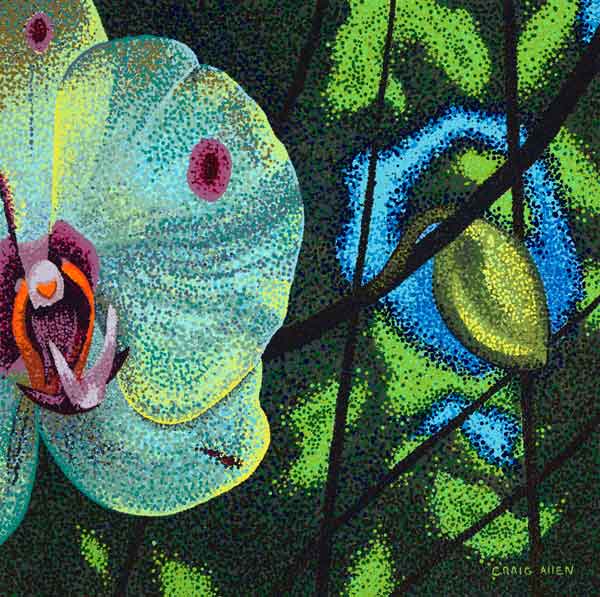
Art & visual thinking opens the mind through awareness. In contemplation, flowers and plants are capable of doing the same … we blossom in their presence. Their environmental inter-relationships are complex and fascinating, They are an endless subject for exploration.
Orchid
Although not exclusively, I explore flowers and plants primarily through the use of pointillism. Their forms can be found in other creative endeavors. However, in using the dot to paint, I stand before opportunity and invitation.
This calling beckons me, to contemplate not just the ecosystem, but my place within it. At times, that siren song is overwhelming. That is precisely when writing proves the most useful. This Journal Entry: Flowers & Plants is a channeling of energy and a stage for internal problem solving.
“An awareness of plants seems to be hard-wired in the human brain, reflecting perhaps the central role wild plants played as food for early hunter-gatherers, of perhaps their aesthetic beauty, which has been lauded by poets, scholars and artists for millennia. Plants were one of the first subjects to be painted by early artists, after animals and humans themselves.”
– James Compton: Plant: Exploring the Botanical World
Looking to O’Keefe
I’ve alwyas found there to be an authenticity in O’Keefe’s flower eroticism. In the natural world, reproduction is the organism’s primary drive. The flower accomplishes this in part, by enticing insects or animals to participate in the process.
In order for an insect or animal to partake of the flower’s earthly delights, it must perform a service. It lures other lifeforms through the use of pollen, nectar and beauty.
Call it ‘The Botany of Desire‘ at work. The complexity of these sexual tactics seems to resonate with the human being. Culturally, we have used flowers for many purposes around the globe, including as a symbol of affection.
Biological Possibilities
Flytraps & Funerals
Some flowering plants are carnivorous. Through evolutionary adaptation their blossoms have evolved to lure prey to its death and consume it. Examples include the Venus Flytrap and the many beautiful species of Pitcher Plants.
These death traps are an interesting example of complexity of the species in this Journal Entry: Flowers & Plants. As I write about complex life processes, dying is as much of the script as living. I am not surprised we adorn caskets and funerals with flowers as often as we do our weddings and birthdays.
“Somewhere around six hundred million years ago, green algae began to move out of shallow fresh waters and onto land. These were the ancestors of all land plants. The evolution of plants transformed the planet and its atmosphere and was one of the pivotal transitions in the history of life – a profound breakthrough in biological possibility. Today, plants make up 80 % of the mass of all life on earth and are the base of the food chains that support nearly all terrestrial organisms.”
– Merlin Sheldrake: Entangled Life: How Fungi Make Our Worlds, Change Our Minds & Shape Our Futures
Flowers & Plants
Oceans of Color
I was in Anza-Borrego State Park. Standing there, knee deep in an ocean size field of wildflowers.
That was when I first began to think about flowers as a subject …

I have been interested, in butterflies and beetles for a long time. I was painting images of them in pointillism at the time of my park visit. I could see them dancing among the flowers in the fields around me. Vascular in structure, endless in shape and sizes, flowers are as riotous an explosion of color as some insects. Any gardener is aware of the plants popularity, with butterflies and caterpillars.
Great Orange Tip Butterflies
An immense family of insects, many species of beetle love flowers as much as their kindred the butterfly. The beetle is an excellent example however, of the adversarial role humans, plants and insects can have. Food or prey, life eats life.
“Drawing and painting flowers is one of our earliest instincts as very young children. Whether it’s their color, their shape or our in-built understanding of their transience, something about plants tempts us to try and replicate them on paper almost as soon as we can pick up a crayon or brush.”
– James Compton: Plant: Exploring the Botanical World
But it can be two different things, knowing you want to do something and knowing how you’re going to go about doing it. I’ve often struggled with questions concerning how I want to present my art. What it should be, what it should entail, what is it?
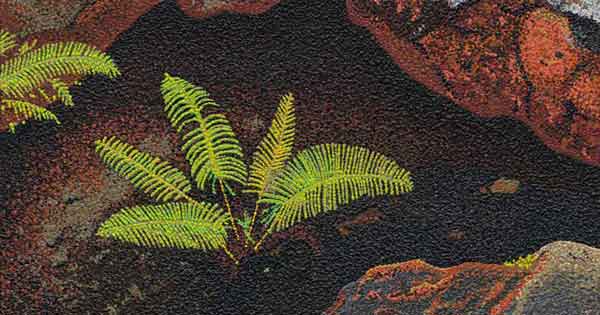
I seek unity in my work. I search for different ways to place my artwork into a cohesive body that makes sense to me. I look for connections.
Detail: Fissure and Fern
I admire many artists in the world. But, following the advice of others, although not always bad, can leave me feeling somehow, unfulfilled. Like I left something out, a part of myself. Is it self-discovery? I decided to build my own website as part of my unearthing.
Hawai’i
Life on the Big Island
After moving to Hawaii, I was exposed to an ever-greater profusion of flowers and plants. Living on the Big Island, I found it impossible not to think about the subject of plants in greater detail. There is an entire acre that stretches out around our house and it is filled with plants.
The Hawaii Tropical Botanical Garden is one of my favorite places to go, when I want to look at flowers. It is a incredible place, brimming with inspiration. Right down to the sea, an entire ecosystem is spread out before the visitor.
Wandering the paths in the garden, I often think about frameworks and structure in the world and my work.
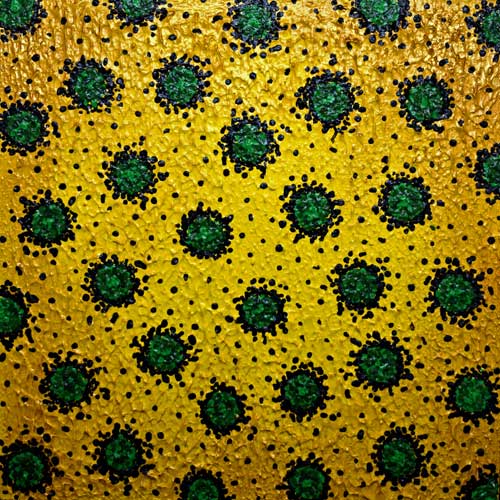
After our move, the first few years were spent working on our house. It was a former rental property and needed quite a bit of work and improvement. An impenetrable jungle was grasping greedily at our doorstep. In Hawaii, plants never really stop growing.
Cell: Yellow with Green
There are seasons in Hawaii. On the mainland you might have summer and winter. On the islands, I think more in terms of fast, and a faster growing season. There may be bit of a slowdown in the winter months, but you’d never know it. Everything green grows and creeps, cells divide, life spreads and competes.
“Sometimes I wish I could photosynthesize so that just by being, just by shimmering at the meadows edge or floating lazily on a pond, I could be doing the work of the world while standing silent in the sun.”
– Robin Wall Kimmerer: Braiding Sweetgrass: Indigenous Wisdom, Scientific Knowledge, and the Teachings of Plants
Complexity
In Evolutionary Survival
In their cells, functionality is built within the beauty of the flower’s intricate structure. Plants and flowers are of crucial importance in the natural environment. They are indispensable in the recycling of the atmosphere.
Plants perform twin roles as both the creators of oxygen, and as carbon sinks. Reaching deep into the earth with a delicate network of roots, plants join the Earth to the sky.
The flower’s appealing petals work primarily to attract pollinators. Plants and insects have, in fact, long played vital co-evolutionary roles in one another’s development. As a result, they have adapted to each other’s need, nature and form. They use one-another in the quest for survival.
I have painted different species of butterfly and beetle on my creative journey. You will find examples of those in my Gallery under Insect Specimens. But, they are not always as important in pollination as may be imagined. There is an attraction to their colors and forms. They accessorize well together.
Plants & Fungi
Their connection with insects is not the only intimate relationship flowering plants rely upon. There is another world, an entire network largely unseen below our feet. It connects all plants together in a vast wood-wide web.
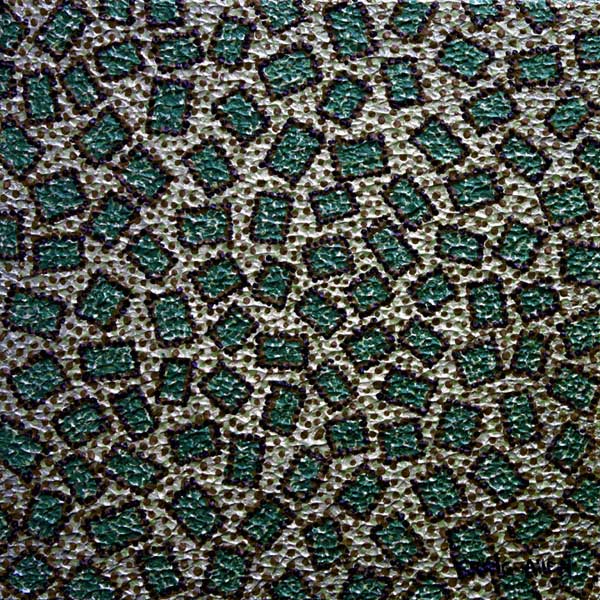
These connections happen at the root level. These happen in the Underland, where plants work with fungi in tandem. These inter-relationships and connective processes, began before plants were able to photosynthesize. Fungi, in fact, did it for them.
Evolving 3
Many gardeners are familiar with mycorrhizal fungi. There is a growing movement to add it to our gardens. The mycelium of this fungus forms intricate relationships with plants along their root systems.
Fungi and plants exchange elements they are able to extract from the environment. Fungi served as a plant’s roots before they had roots. Mycorrhizae play important roles in a plant’s nutrition, soil biology and soil chemistry.
“Many of the most dramatic events on Earth have been – and continue to be – a result of fungal activity. Plants only made it out of the water around five hundred million years ago because of their collaboration with fungi, which served as their root systems for tens of millions of years until plants could evolve on their own. Today, more than ninety percent of plants depend on mycorrhizal fungi – from the Greek words for fungus (mykes) and root (rhiza) – which can link trees in shared networks sometimes referred to as the ‘wood wide web’.”
– Merlin Sheldrake: Entangled Life: How Fungi Make Our Worlds, Change Our Minds, and Shape Our Futures
Flowers
There are roughly 266,000 species of plants now living. At least 235,000 plants, produce flowers. Their numbers pale in lieu of time. Fossil records confirm the existence of flowers dating back 123 million years ago.

Flowers became the dominant photosynthetic organism nearly everywhere on land between 80 – 90 million years ago. Flowers are an exquisite example of a species ability to reshape the environment.
Sunflower Sutra 1
Creating Hybrids
A New Art Form?
Over the years, flowers have been bred and then cross-bred. As a result, we have developed increasingly elaborate and beautiful hybrids. You can find these varieties widely available at garden centers and flower shops.
From tulips to roses, from orchids to sunflowers humans have created hybrids to fill nearly every desire. The petal’s original purpose of attracting pollinators has been usurped. It is aesthetic beauty and cut-flower longevity we desire.
There have been casualties along the way in the quest to increase shelf life, produce longer stems, and bigger blossoms. Scent was an unintentional victim of floriculture. A visit to any florist has changed stopping to ‘smell the roses’ to something often disappointing.
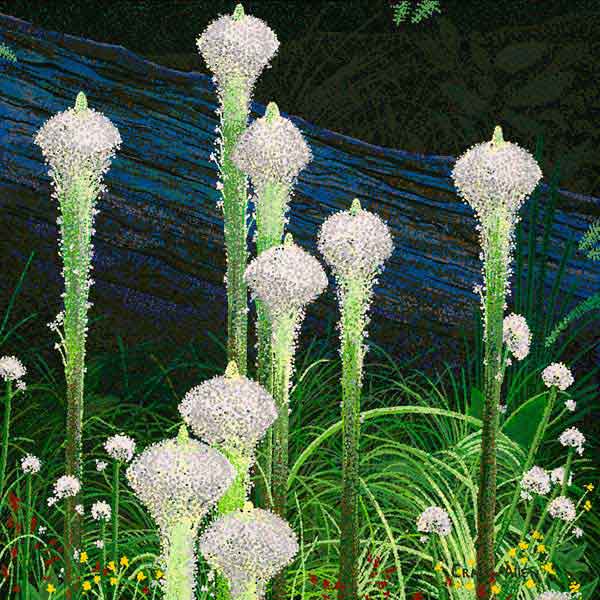
Unbound both philosophically and technically, genetic engineers are at work trying to resolve a problem we have created.
Blue Log Bear Grass, Paradise Park Trail Mount Hood
By changing how flowers metabolize nutrients into chemical compounds (fragrance a volatile compound evaporating easily into the air) scientists now hope to ‘re-scent’ flowers. Expected are a panoply of choices that may include novel scents, blue roses and flowers that glow in the dark.
“The changing purposes of botanical art reflects the changing role of plants in human life. Early peoples saw plants as gifts of the Gods, thus they were closely associated with ritual and religion.”
– James Compton: Plant: Exploring the Botanical World
This is Where it Begins
As an artist, I find the ecological necessity and function of flowers as alluring as their form. Art, flowers, plants and pointillism are crucial in the development of the “Constructed Arrangements” I envision.
I place every flower or plant I paint into the larger conceptual universe that includes my entire body of work. Our attractions to these lifeforms, my attraction, is rooted by color and luminance. I find those two things in interior places.
Color not only defines an objects surface but imbues it with symbolic and emotional content. Luminance defines texture, shape, and object line. Do you like the shape of things when you look at yourself?
We share a mutual attraction, to various plant and flower forms. Garden centers around the country profit massively from yearly sales, all driven by our passion. It is all one big interconnected system.

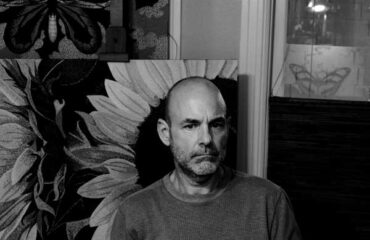


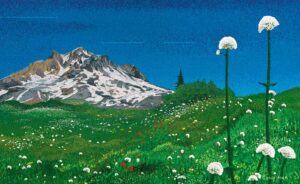

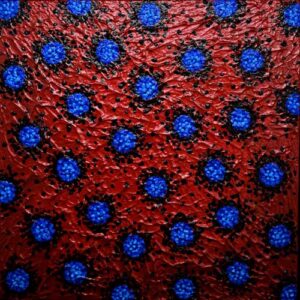
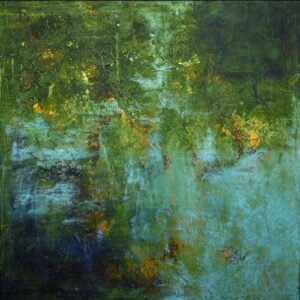

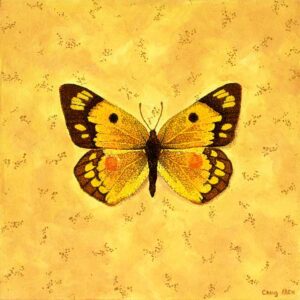
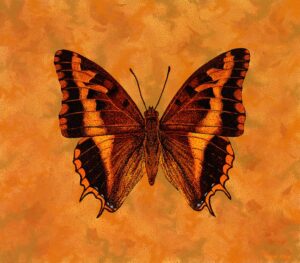
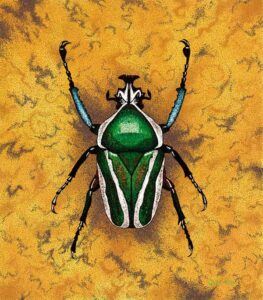
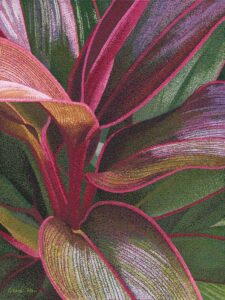
Facebook: Craig Allen Lawver Art